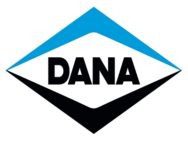Understanding Torque Converter Failures in Industrial Applications
Torque converters are critical components in many industrial power transmission systems, enabling the smooth transfer of power from engines to transmissions. At K&L Clutch, we’ve seen firsthand how torque converter failures can lead to costly downtime and repairs. Understanding the common causes of these failures can help you implement preventative maintenance strategies to extend the life of your equipment.
7 Common Causes of Torque Converter Failure
1. Overheating
Excessive heat is perhaps the most common culprit behind torque converter failures. Industrial torque converters operate under significant stress, and when transmission fluid overheats, it breaks down and loses its lubricating properties. This can lead to:
- Damaged seals and gaskets
- Warped metal components
- Premature wear on internal components
- Transmission fluid degradation
Temperature issues often begin with insufficient cooling or operating equipment beyond recommended duty cycles. In heavy-duty industrial applications, maintaining proper cooling systems is essential.
2. Contaminated Transmission Fluid
The quality and cleanliness of transmission fluid directly impact torque converter performance and longevity. Contaminated fluid can contain:
- Metal shavings from worn components
- Dirt and debris
- Sludge from fluid breakdown
- Water intrusion
These contaminants act as abrasives that accelerate wear on precision components like stators, turbines, and pumps. Regular fluid analysis and scheduled replacements are crucial preventative measures.
3. Lockup Clutch Failure
Many modern industrial torque converters feature lockup clutches that engage to provide direct mechanical connection during steady-state operation. These clutches can fail due to:
- Friction material wear
- Damaged springs or pistons
- Control valve issues
- Electrical solenoid failures
When a lockup clutch fails, it often manifests as shuddering, slipping, or complete loss of power transfer efficiency.
4. Bearing Wear or Failure
Bearings support the rotating components within the torque converter, allowing for smooth operation under high loads. Bearing problems typically develop from:
- Inadequate lubrication
- Misalignment
- Manufacturing defects
- Excessive operating pressures
Failed bearings can lead to catastrophic damage as they allow excessive movement of components designed to operate with precise clearances.
5. Seal and Gasket Deterioration
The internal seals and gaskets in torque converters prevent fluid leaks and maintain proper pressure. These components deteriorate over time due to:
- Heat cycles
- Chemical breakdown from fluid exposure
- Physical stress
- Age-related hardening
Leaking fluid not only reduces performance but can lead to more serious failures if internal components run dry.
6. Pump Failure
The pump component of a torque converter creates the hydraulic pressure necessary for operation. Pump failures can result from:
- Cavitation due to air in the system
- Worn pump vanes or impellers
- Excessive clearance from component wear
- Material fatigue
When pump efficiency decreases, pressure drops throughout the system, leading to slipping and eventual system failure.
7. Improper Application or Specification
Sometimes torque converter failures stem from using components that aren’t properly matched to the application’s demands. Issues include:
- Undersized converters for the power requirements
- Incompatible stall speeds for the application
- Incorrect diameter or coupling specifications
- Inadequate cooling provisions for duty cycle
Warning Signs of Impending Torque Converter Failure
Recognizing early warning signs can help prevent catastrophic failures:
- Unusual noises (whining, grinding, or rattling)
- Shuddering or vibration during operation
- Slipping or delayed power transfer
- Overheating transmission
- Metal particles in transmission fluid
- Reduced efficiency or power
- Illuminated warning lights on electronic systems
Preventative Maintenance to Extend Torque Converter Life
Implementing a robust maintenance program can significantly extend the service life of industrial torque converters:
- Regular Fluid Analysis and Changes: Monitor fluid condition and replace according to manufacturer specifications rather than just time intervals.
- Temperature Monitoring: Install temperature sensors to detect overheating conditions before damage occurs.
- Proper Cooling: Ensure cooling systems are adequately sized for your application and regularly maintained.
- Filtration Systems: Use high-quality filtration to remove contaminants before they cause damage.
- Operator Training: Ensure equipment operators understand proper startup, operation, and shutdown procedures.
- Vibration Analysis: Implement regular vibration monitoring to detect issues before they lead to failures.
- Load Management: Avoid operating equipment beyond its rated capacity for extended periods.
When to Consider Rebuilding or Replacement
Even with excellent maintenance, torque converters eventually require rebuilding or replacement. Consider these services when:
- Efficiency has noticeably decreased
- Internal components show significant wear during inspection
- The converter has been in service beyond its recommended service life
- Operating conditions have changed significantly
- Repeated minor issues suggest deeper problems
Trust K&L Clutch for Your Torque Converter Needs
At K&L Clutch, we specialize in industrial clutch and torque converter solutions for demanding applications. Our experienced team provides expert diagnosis, quality rebuilds, and precision-engineered replacements to keep your equipment running at peak efficiency.
Whether you’re experiencing issues with your current torque converter or looking to implement a preventative maintenance program, our specialists can help you maximize uptime and extend component life.
Contact us today to learn more about our industrial torque converter services and how we can support your operation’s reliability and performance goals.
In the world of heavy machinery and commercial vehicles, efficiency and versatility are key. One technology that exemplifies these qualities is the Power Take-Off (PTO) system. At K&L Clutch, we’re passionate about power transmission, and we believe understanding PTO can help our customers make informed decisions about their equipment needs. In this article, we’ll explore how PTO works and why it’s such a crucial component in many industries.
What is Power Take-Off?
Power Take-Off, commonly abbreviated as PTO, is a mechanical system that allows the main engine of a vehicle or stationary power source to transmit power to additional equipment or machinery. It’s essentially a way to “take off” power from the primary engine and use it to operate other devices.
The Basic Principle of PTO
At its core, PTO works on a simple principle: it taps into the vehicle’s transmission or engine to divert some of the power being generated. This diverted power can then be used to run auxiliary equipment, such as hydraulic pumps, water pumps, generators, or specialized tools specific to various industries.
Components of a PTO System
A typical PTO system consists of several key components:
1. PTO Drive Gear: This gear is connected to the vehicle’s transmission or engine.
2. PTO Unit: The main body of the PTO, which houses the gears and bearings.
3. Output Shaft: This shaft transmits the power from the PTO unit to the auxiliary equipment.
4. Control Mechanism: Usually a lever or switch that engages or disengages the PTO.
How PTO Engages
When the PTO is engaged, here’s what typically happens:
1. The operator activates the PTO control.
2. The PTO clutch engages, connecting the PTO drive gear to the output shaft.
3. Power from the engine or transmission is transferred through the PTO unit.
4. The output shaft begins to rotate, providing power to the attached equipment.
Types of PTO Systems
There are several types of PTO systems, each suited to different applications:
1. Transmission-mounted PTO: This is the most common type, attached directly to the vehicle’s transmission.
2. Engine-mounted PTO: Connected directly to the engine’s crankshaft or timing gears.
3. Split-shaft PTO: Installed in the vehicle’s driveline, between the transmission and differential.
Applications of PTO
The versatility of PTO systems has made them indispensable in numerous industries:
– Agriculture: Powering implements like balers, sprayers, and seeders.
– Construction: Operating cement mixers, compressors, and hydraulic systems on excavators.
– Utilities: Running bucket lifts, augers, and winches on utility trucks.
– Transportation: Powering refrigeration units on reefer trucks or hydraulic systems on dump trucks.
– Emergency Services: Operating water pumps on fire engines or hydraulic rescue tools.
Benefits of PTO Systems
1. Efficiency: PTO eliminates the need for separate engines to power auxiliary equipment.
2. Cost-effectiveness: It reduces fuel consumption and maintenance costs associated with multiple engines.
3. Space-saving: PTO systems take up less space than additional engines or motors.
4. Versatility: A single vehicle can perform multiple functions with different PTO-driven attachments.
Considerations When Using PTO
While PTO systems offer numerous advantages, there are some important considerations:
1. Power Management: Engaging PTO reduces the power available for vehicle propulsion.
2. RPM Requirements: Many PTO systems require the engine to run at a specific RPM for optimal performance.
3. Safety: Proper training is crucial, as PTO systems can be dangerous if mishandled.
4. Maintenance: Regular inspections and maintenance are necessary to ensure smooth operation and longevity.
The Future of PTO Technology
As vehicle technology advances, so does PTO. We’re seeing trends towards:
– Electric PTOs: In line with the shift towards electric vehicles.
– Intelligent PTO Systems: With advanced controls and monitoring capabilities.
– Higher Efficiency: Continuous improvements in power transmission efficiency.
Power Take-Off systems have revolutionized how we utilize engine power across various industries. By understanding how PTO works, businesses can make informed decisions about their equipment needs and maximize efficiency. At K&L Clutch, we’re committed to providing top-quality PTO solutions and helping our customers harness the full potential of their machinery.
Whether you’re in agriculture, construction, transportation, or any industry that relies on powerful machinery, PTO systems offer a versatile and efficient way to multiply the capabilities of your vehicles and equipment. As technology continues to evolve, we can expect PTO systems to become even more integral to powering the work that drives our world forward.
The clutch is an essential mechanical device that acts as a link in systems that require the selective transmission of rotational motion from one component to another. This type of mechanism is most commonly found in motor vehicles where they act as the linkage between the transmission and the engine.
While automotive clutches are certainly the most known, they are not the only type of clutch used for specific purposes. Industrial clutches are quite common for industrial applications, serving the fundamental purpose of connecting and disconnecting power transmission for the transfer of rotational force.
However, in many ways, industrial clutches are different from their automotive counterparts, such as in their robust construction and ability to handle massive torque loads. Learn more about industrial clutches as we answer the questions “What is an industrial clutch?” and “How does an industrial clutch work?” below.
What is an Industrial Clutch?
An industrial clutch is a type of clutch used in various industrial applications, such as operating heavy machinery and facilitating the efficient transfer of power. Through their different functionalities, industrial clutches allow the machine or equipment to enjoy smoother start-ups, efficient speed changes, overload protection and synchronization with other machinery components.
The main difference between an industrial clutch and other clutch types is their design specifications. Generally, industrial clutches are designed to handle high torque loads, frequent engagements and demanding operating conditions within industrial settings. Given their intended application, they often feature robust construction using high-quality materials and come with advanced design features that enable them to withstand the harsh performance requirements of heavy machinery.
How Does An Industrial Clutch Work?
Industrial clutches typically consist of different industrial clutch parts, including the flywheel, pressure plate, clutch disc, clutch release bearing, clutch fork and actuation mechanisms. Within the mechanism itself, the flywheel directly connects to the drive shaft while the pressure plate and clutch disc are located between the flywheel and the driven shaft.
Within these mechanisms, one member is attached to the power unit (typically the engine), which then drives the other member to provide output power. In this case, when the clutch is engaged, the clutch disc presses against the flywheel and pressure plate to facilitate the transfer of power. Meanwhile, when the clutch is disengaged, it separates the entire mechanism from the flywheel and pressure plate to interrupt the transmission of power.
What are the Different Types of Industrial Clutches?
There are several types of industrial clutches, including the following:
- Friction Clutch: The most common type; they consist of friction discs and pressure plates that push the discs together and allow the transmission of torque.
- Electromagnetic Clutch: Uses magnetic forces to engage and disengage the clutch.
- Hydraulic Clutches: Engages and disengages the clutch through the action of hydraulic pressure.
- Pneumatic Clutches: Compressed air generates the needed pressure to engage and disengage the clutch.
- Centrifugal Clutches: This type of industrial clutch operates based on centrifugal force.
- Dog Clutches: Made up of teeth on both driving and driven components that mesh together when the clutch is engaged.
- Cone Clutches: As the name suggests, this type of industrial clutch has a conical shape, which allows for gradual engagement and disengagement.
- Tooth Clutches: Similar to dog clutches, tooth clutches have teeth on both driving and driven components, offering more precise timing and control.
Maintain Operational Efficiency with K&L Clutch
The industrial clutch performs a crucial role in allowing the seamless transfer of rotational force from one component to another within an equipment’s mechanism. Because of these integral functions, your machine’s industrial clutch must be maintained in excellent condition to ensure operational efficiency.
K&L Clutch is your partner in securing replacement parts for your machines. We supply industrial clutches and other mechanical components to keep your machines running and prevent significant operational downtime. We supply parts manufactured by some of the industry’s most notable brands and provide repair and installation services for all the parts we sell. For more assistance, or to learn more information, you are welcome to contact us here.
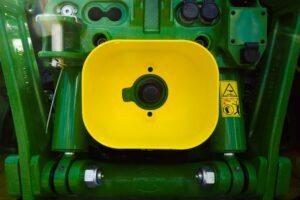 A power take-off is a gadget that transfers mechanical energy to another piece of equipment, allowing machines to function without needing an additional engine. Power take-offs are utilized in several applications but are commonly used in the agricultural and industrial sectors. From water pumps to farming tractors, a reliable power take-off kit can be installed in a wide range of equipment, allowing for improved performance and enhanced energy conservation.
A power take-off is a gadget that transfers mechanical energy to another piece of equipment, allowing machines to function without needing an additional engine. Power take-offs are utilized in several applications but are commonly used in the agricultural and industrial sectors. From water pumps to farming tractors, a reliable power take-off kit can be installed in a wide range of equipment, allowing for improved performance and enhanced energy conservation.
Read Full Article →
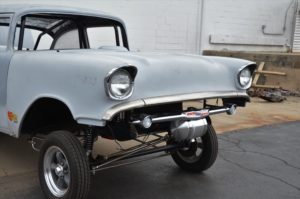 Car axles allow you to maximize your engine’s power and easily control your vehicle’s direction. K&L Clutch offers three brands of car axles that deliver the quality and durability that industrial drivers, heavy machinery operators and those with high-powered cars expect from their vehicles.
Car axles allow you to maximize your engine’s power and easily control your vehicle’s direction. K&L Clutch offers three brands of car axles that deliver the quality and durability that industrial drivers, heavy machinery operators and those with high-powered cars expect from their vehicles.
Read Full Article →
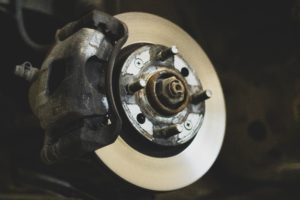
Heavy equipment requires high-performance braking systems that withstand extreme thermal loads. But, more importantly, they should keep the brakes running cool. Three types of braking systems can be used depending on the specific industrial machine.
Read Full Article →
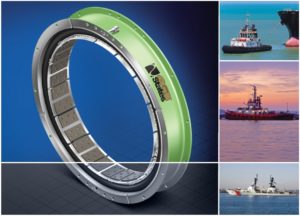
Have you ever asked yourself how marine crafts survive long cruises across oceans and seas? The marine environment is hazardous. All processes to go through smoothly, ensure that safety goes first by having quality clutches from one of the best manufacturing companies installed in your marine vessels and anchor spots.
Read Full Article →
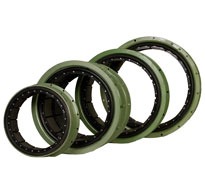
An industrial air clutch is a plate connected to a drive shaft of power machinery, and when engaged, it uses compressed air to slow down or stop the engine by disengaging it from what is driven. The industrial air clutch uses air instead of hydraulics or centrifugal forces to stop heavy machines.
Read Full Article →
It is worth noting that not long ago, in 1902, the year, the design for the automatic transmission torque converter appeared. Nearly nothing has changed during this time, all the basics and features are included in modern models.
Initially, these converters were installed exclusively on buses. Only a few decades later, manufacturers started to include it in passenger vehicles. And this is not surprising because the part allows you to convert and transfer the moment from the engine to the installed automatic transmission very well. The driver can also change the torque and speed. Initially, this innovation began to be installed on the Ford car. Popularity has increased significantly after a few years.
Read Full Article →
 A power take-off is a gadget that transfers mechanical energy to another piece of equipment, allowing machines to function without needing an additional engine. Power take-offs are utilized in several applications but are commonly used in the agricultural and industrial sectors. From water pumps to farming tractors, a reliable power take-off kit can be installed in a wide range of equipment, allowing for improved performance and enhanced energy conservation.
A power take-off is a gadget that transfers mechanical energy to another piece of equipment, allowing machines to function without needing an additional engine. Power take-offs are utilized in several applications but are commonly used in the agricultural and industrial sectors. From water pumps to farming tractors, a reliable power take-off kit can be installed in a wide range of equipment, allowing for improved performance and enhanced energy conservation. Car axles allow you to maximize your engine’s power and easily control your vehicle’s direction. K&L Clutch offers three brands of car axles that deliver the quality and durability that industrial drivers, heavy machinery operators and those with high-powered cars expect from their vehicles.
Car axles allow you to maximize your engine’s power and easily control your vehicle’s direction. K&L Clutch offers three brands of car axles that deliver the quality and durability that industrial drivers, heavy machinery operators and those with high-powered cars expect from their vehicles.


